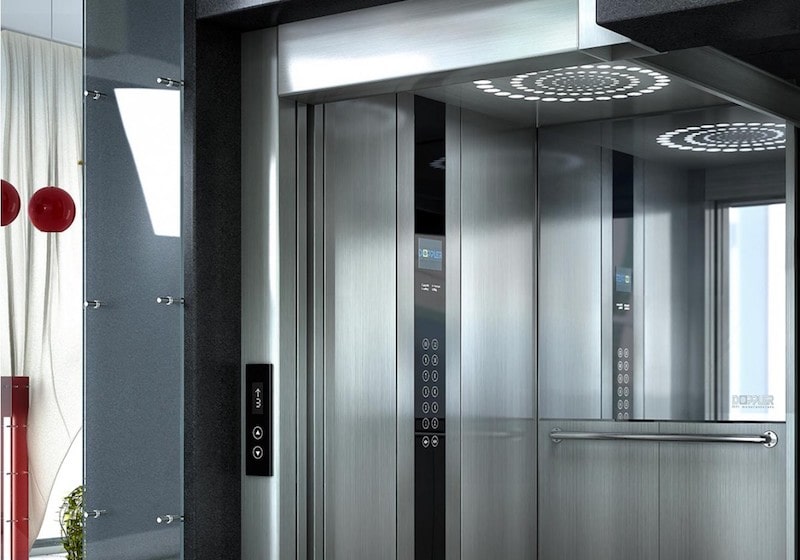Find Reputable Lift Repair Near Me for Quick and Affordable Solution
Find Reputable Lift Repair Near Me for Quick and Affordable Solution
Blog Article
Looking Into the Globe of Elevators: Usual Problems Encountered by Different Lift Mechanisms
As we browse through the upright transport systems of contemporary buildings, lifts stand out as an important element of our everyday lives. From hydraulic elevators to grip systems and machine-room-less layouts, each lift kind comes with its set of typical problems.
Hydraulic Lifts
Hydraulic elevators, typically preferred for low-rise structures, use fluid pressure to manage the activity of the elevator auto (lift repair companies). This device includes a hydraulic pump pushing oil right into a cyndrical tube, causing the elevator to relocate the preferred direction. While hydraulic elevators are recognized for their peaceful and smooth procedure, they do come with their own set of usual problems
One prevalent problem with hydraulic elevators is oil leakage. In addition, concerns with the control system, such as malfunctioning shutoffs or a malfunctioning pump, can cause disturbances in the lift's motion.
Regular upkeep and prompt repairs are important to guarantee the smooth performance of hydraulic elevators. By attending to these typical concerns proactively, building owners can decrease downtime and make certain the safety and security and efficiency of their upright transportation system.
Traction Lifts
When considering vertical transport systems in buildings, another typical kind apart from hydraulic lifts is the grip lift. Traction lifts run making use of a system of ropes and counterweights that move the lift vehicle by gripping onto the hoist ropes. This system enables smoother and quicker upright transport contrasted to hydraulic systems.
One of the usual concerns faced by traction elevators is rope wear. The consistent movement of the ropes within the grip system can bring about wear and tear in time, potentially creating the lift to breakdown or become hazardous for usage. Normal inspections and upkeep of the ropes are important to guarantee the elevator's proper functioning and safety and security.
One more issue that traction lifts might encounter is connected to the control system. Troubles with the control system can bring about issues such as erratic motion, delays in reaction times, and even complete closures. Regular screening and maintenance of the control system are crucial to stop such concerns and make certain the lift's reliability.
Machine-Room-Less (MRL) Lifts

One of the essential components of MRL lifts is the small gearless traction maker that is set up within the hoistway. This home equipment successfully drives the lift car without the need for cumbersome tools located in traditional traction lifts. In addition, MRL elevators generally utilize a counterweight system to stabilize the vehicle, more enhancing their power efficiency.
Regardless of their benefits, MRL elevators might deal with difficulties connected to maintenance and repair work due to the confined area for devices installation. Access for servicing components within the shaft can be limited, needing specialized training for service technicians. Proper maintenance routines and regular inspections are vital to ensure the ongoing smooth procedure of MRL elevators.
Overloading and Weight Restriction Issues
Overloading and weight limitation issues are essential concerns in elevator procedures. Elevator producers style lifts with certain weight capacities to make sure passenger safety and security and devices longevity.
When elevators are overloaded, it puts too much stress on the electric motor, cables, and various other parts, potentially causing breakdowns or breakdowns. Safety and security devices such as sensors and overload sensors are in place to protect against lifts from relocating if they identify excess weight. In addition, exceeding weight limitations can result in increased energy consumption and wear and tear on the elevator system.
To reduce straining issues, developing managers need to prominently show weight restrictions in elevators and educate occupants on the value of adhering to these limitations - lift repair companies. Regular upkeep checks by certified service technicians can also assist guarantee that lifts are running within safe weight parameters. By attending to overloading and weight restriction concerns proactively, building proprietors can boost elevator safety and security and effectiveness
Electric System Failings
Going beyond weight limits in elevators can not only cause mechanical concerns but additionally possibly contribute to electrical system failures within the lift framework. Electrical system failings are a crucial concern in elevator operation, as they can create unforeseen shutdowns, breakdowns, or even safety dangers. One usual electrical concern is the overheating of parts as a result of extreme present flow brought on by straining the elevator past its ability. Your Domain Name This can cause damage to the control, electric motor, or electrical wiring systems, resulting in pricey repair services and downtime.
Furthermore, power surges or changes in the electrical supply can additionally disrupt the elevator's procedure, impacting its performance and safety and security. These electric disruptions can harm delicate elevator parts such as control board, motherboard, or sensors, causing system failures. Routine maintenance and inspections are essential to recognize and address prospective electric concerns without delay, ensuring the risk-free and efficient operation of lift systems. By sticking to weight limits and conducting routine electric system checks, structure proprietors can minimize the risk of electrical failings in lifts.
Conclusion

Hydraulic lifts, commonly favored for low-rise structures, make use of fluid stress to control the movement of the elevator car.When thinking about vertical transport systems in buildings, one more usual kind aside from hydraulic lifts is the grip lift. Traction lifts operate using a system of ropes and counterweights that move the elevator cars and truck by clutching onto the hoist ropes. Unlike traditional elevators that call for a separate maker room to house the equipment, MRL elevators incorporate many of the components within the shaft, getting rid of the requirement for read this post here a committed maker space.In final thought, elevators face typical concerns such as hydraulic malfunctions, traction system failings, and electrical system problems.
Report this page